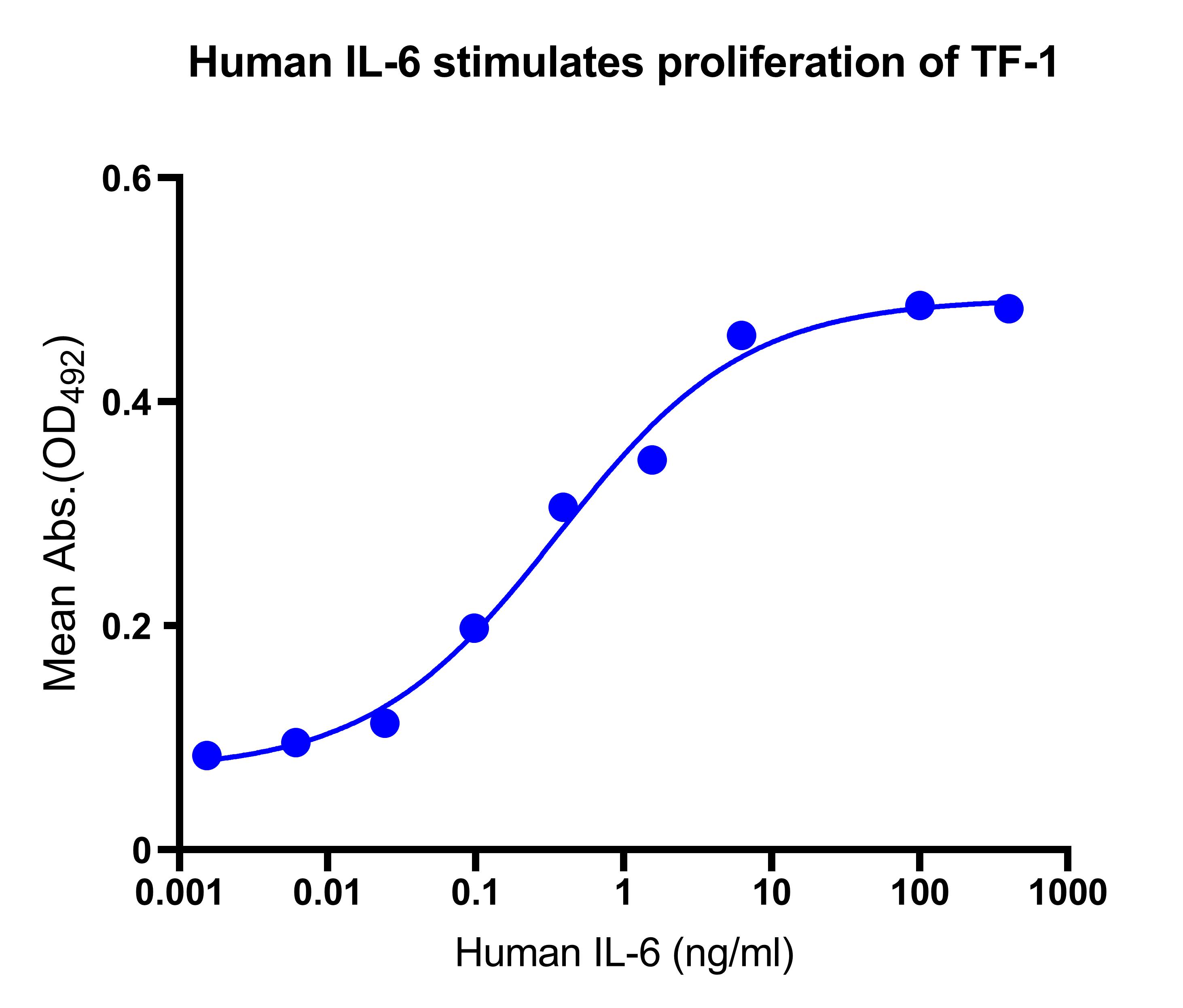Protein sequence (P05231, Val30-Met212) VPPGEDSKDVAAPHRQPLTSSERIDKQIRYILDGISALRKETCNKSNMCESSKEALAENNLNLPKMAEKDGCFQSGFNEETCLVKIITGLLEFEVYLEYLQNRFESSEEQARAVQMSTKVLIQFLQKKAKNLDAITTPDPTTNASLLTKLQAQNQWLQDMTTHLILRSFKEFLQSSLRALRQM
Predicted MW: 20.8 kDa Observed MW: 20, 21 kDa
Lyophilized from a 0.2 μm filtered solution of 0.2M PBS, pH7.4.
12 months from date of receipt, -20 to -70 °C as supplied. 6 months, -20 to -70 °C under sterile conditions after reconstitution. 1 week, 2 to 8 °C under sterile conditions after reconstitution. Please avoid repeated freeze-thaw cycles.
Interleukin 6 (IL-6) is an interleukin that acts as both a pro-inflammatory cytokine and an anti-inflammatory myokine. Osteoblasts secrete IL-6 to stimulate osteoclast formation. Smooth muscle cells in the tunica media of many blood vessels also produce IL-6 as a pro-inflammatory cytokine. IL-6's role as an anti-inflammatory myokine is mediated through its inhibitory effects on TNF-alpha and IL-1 and its activation of IL-1ra and IL-10. There is some early evidence that IL-6 can be used as an inflammatory marker for severe COVID-19 infection with poor prognosis, in the context of the wider coronavirus pandemic. IL-6 stimulates the inflammatory and auto-immune processes in many diseases such as multiple sclerosis, neuromyelitis optica spectrum disorder (NMOSD), diabetes, atherosclerosis, depression, Alzheimer's disease, systemic lupus erythematosus, multiple myeloma, prostate cancer, Behçet's disease, rheumatoid arthritis, and intracerebral hemorrhage.
Immobilized Human IL-6 at 4 μg/mL (50 μL/well) can bind IL-6R alpha/CD126 Fc Chimera, Human (UA010448) with EC50 of 9.202-11.33 ng/ml.

Measured in a cell proliferation assay using TF‑1 human erythroleukemic cells. The ED50 for this effect is 0.16-0.72 ng/mL.
2 μg(R: reducing conditions)